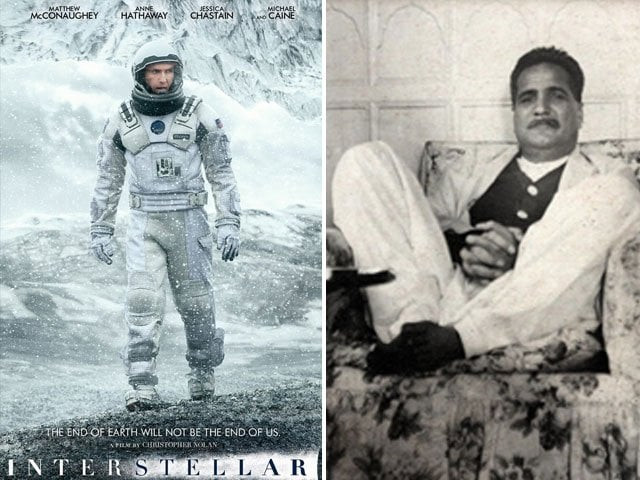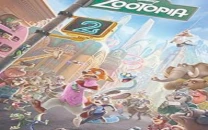Interstellar: Where Christopher Nolan meets Allama Iqbal
Similarities between Christopher Nolan's masterpiece and Allama Iqbal's poetry are astounding

PHOTO: FILE
This sounded like a valid suggestion as scientific concepts – including that of the General Theory of Relativity – were carefully interwoven in the film’s storyline, and a theoretical physicist, Kip Thorne, was one of its executive producers and scientific consultant.
However, during the troubled sleep that I had after watching the movie, my mind – instead of riveting on the mysteries and paradoxes of post-Newtonian physics – turned to poetry and someone started whispering verses of Iqbal into my ear.
Dunkirk review: A not-so-Nolan masterpiece
Mohabbat Mujhay Un Jawanon Say Hay,
Sitaron Pay Jo Daltay Hain Kamand
– I love those young people who aim at stars –
Sitaron Say Aagay Jahan Aur Bhe Hain
Abhi Ishq Kay Imtahan Aur Bhi Hain
– There are other worlds beyond the stars; there are more trials in store in this pursuit of love –
Bay Khatar Kod Para Aatish-e-Namrud Mein Ishq,
Aqal Hay Mehway Tamasha-e-Lab-e-Baam Abhi
- Love jumped into the Nimrod’s fire fearlessly; Reason is still pondering by the parapet –
Ash Ki Taqweem Mein Asr-e-Rawan Kay Siwa
Aur Zamanay Bhi Hain Jin Ka Nahi Kio Naam
- Apart from the current moment, the love’s calendar also contain other times, which have no name –
'Mission Impossible 6' shoot halted as Tom Cruise breaks ankle in stunt
Sitting up on my bed the next morning, I started wondering at the strange similarity between the ideas of Nolan and Iqbal. It seemed as if Nolan had unwittingly undertaken the task to create a cinematic experience out of a portion of Iqbal's poetry.
I shook my head in disbelief at this preposterous idea. How could verses of one of the most stalwart critics of western thought fit with such apparent ease various sequences of a movie based on the most recent the scientific speculations of the west? I pondered, as I started making a mental review of the film to see how true my earlier impression was.
Like Iqbal, Nolan is also obsessed with stars, though in a literal sense. In an interview, he had told BBC "...it's time to inspire another generation to really look outwards and to look to the stars again."
Like Iqbal, he also loves those young people who aim at stars. And Interstellar is about those ‘loveable’ people who actually set out for the stars and the ‘other worlds’ that lie beyond them. But despite the research journal’s recommendation, Interstellar is a story of love more than a story of science.
The stars and the ‘other worlds’ promise new possibilities but the way to them - in Iqbal’s words - is full of 'trials'. Here besides death, utter abandonment and loneliness, you also run the risk of time-dilation – an effect of speed and gravity which makes a few hours in an astronaut's clock equivalent to many decades on earth.
Like Iqbal, Nolan also believes that only ‘love’ can undertake and withstand these difficulties.
5 scary movies you didn't know were based on actual events
And while the film generally stays silent about the motivation of the other astronauts, its two main characters – Cooper and Dr Brand – do undertake the challenge out of sheer love.
Cooper knows that if he does not find another planet, his son and beloved daughter Murphy – who receives messages from the ghost in her bookshelf and tries to stop her father from embarking on the space mission – will die on the blighted earth either due to starvation or suffocation.
Dr Brand, on the other hand, is taking up the challenge in the vague hope of seeing her lover, astronaut Edmond, who had left for the other worlds ten years back and is most likely dead by now.
In this arduous journey, Cooper emerges as the ultimate symbol of love when – in Iqbal’s terms – he along with robot TARS literally jumped into ‘Nimrod’s fire’ – the black hole Gargantua – to shed the spaceship Endurance’s weight in a heroic bid to save Dr Brand and help her reach Edmond’s planet.
Apparently, Christopher Nolan’s earlier plan was to end the story here; and it would still have been a great movie. However, Iqbal was to speak through his work once again as Nolan – under some uncanny inspiration – expanded the theme of love and introduced it as a whole new dimension of the universe.
Slipping past the black hole’s event horizon, Cooper and TARS find themselves inside a ‘tesseract’, which resembles streams of bookshelves capable of peering into Murphy's bedroom at different periods in her life. Cooper now realises that the ‘tesseract’ was ‘created’ to enable his communication with Murphy, and that he was the ghost, who sent messages to her through her bookshelf.
Harry Styles shines in debut film 'Dunkirk'
- Apart from the current moment, the love’s calendar also contain other times, which have no name –
I took a deep breath. Like Iqbal, Nolan also concludes that love is a force that transcends space and time.
This is what Dr Brand also tells Cooper when they were discussing the meaning of love: “Maybe it [love] means something we can't... yet understand. Maybe it's some evidence, some artifact of a higher dimension that we can't consciously perceive…
“Love is the one thing we're capable of perceiving that transcends dimensions of time and space. Maybe we should trust that, even if we can't understand it yet.”
So does Nolan’s creative insight come on a par with that of Iqbal? The answer is 'No'. While trying to interpret this 'science of love', Nolan comes up with a rather weak explanation of 'men of the future' creating the tesseract for Cooper.
Here he falls short of arriving at the realisation of the mystics who believe that space and time actually do not exist and that love is not just a force, but the only force of the universe. Iqbal puts it this way.
Khirad Howi Hay Zaman-e-Makan Ki Zannari,
Na Hay Zaman Na Makan, La Ilaha Illallah
- The [modern] intellect is enslaved by [the manifestations of] space and time, there is neither space nor time; there is no god except God -
Have something to add to the story? Share it in the comments below.



















COMMENTS
Comments are moderated and generally will be posted if they are on-topic and not abusive.
For more information, please see our Comments FAQ